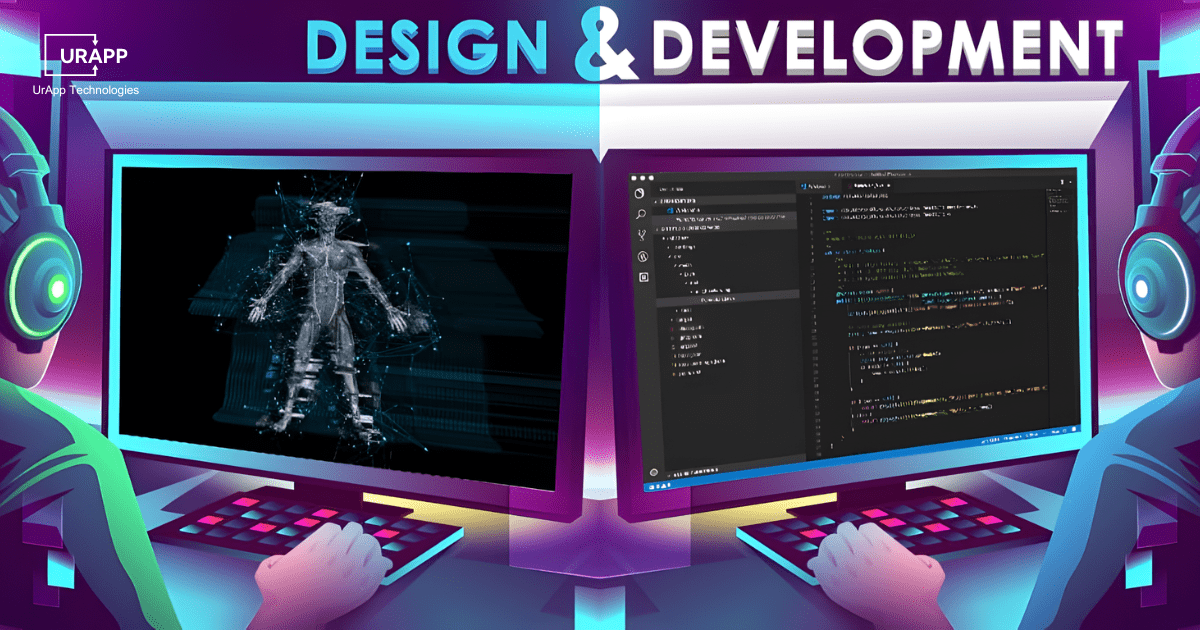Transform your banking experience with URAPP Tech. With over five years of expertise in AR-driven software development, we help financial institutions bring innovation to life — from interactive dashboards to immersive customer experiences. Our custom AR banking solutions make complex financial processes simple, engaging, and future-ready. Let’s build the next generation of digital banking together.
AR in Banking and Finance: Benefits, Use Cases & Future Trends (2025)
Step into the future of banking with AR: visualize your accounts, loans, and investments in interactive 3D right from your device
What is Augmented Reality in Banking?
AR in banking enhances customer experience by merging digital elements with the real world, making financial services more interactive, accessible, and engaging. Users can visualize financial data, explore products through immersive demos, and interact with personalized services in real time, simplifying complex processes and improving engagement.
At URAPP Tech with over 5 years of experience in Augmented Reality solutions, we help banks and financial institutions deliver innovative, secure, and future-ready customer experiences.
AR in banking is on a sharp growth trajectory, projected to rise from $1.61 billion in 2023 to over $12.3 billion by 2033 , with a CAGR of 22.6%. Another report forecasts it reaching $5.9 billion by 2031 at 23.2% CAGR. Growth is driven by AR SDKs and platforms, expected to hit $1.8 billion and $4.7 billion respectively by 2032. Over 60% of users now prefer visual tools to understand financial data, pushing banks to adopt AR features like 3D charts and virtual assistants to improve engagement and stay competitive.

Key Benefits of AR in Banking and Finance
Virtual Banking Experiences
- Banks can create virtual branches in the metaverse, allowing users to interact with services from anywhere.
- Customers can attend virtual consultations, explore financial services, and complete transactions without visiting a physical branch.
Enhanced Data Visualization
- AR converts complex financial data into 3D visuals, making reports and trends easier to understand.
- Bankers and customers alike can use AR real time dashboards to quickly analyze spending patterns, investment performance, or savings progress.
Improved Customer Interaction
- Through banking augmented reality, customers can explore products and financial services like loans or credit cards interactively with real-time simulations.
- Mobile apps can guide users visually through tasks like opening an account or setting up a transfer.
Branch & ATM Navigation
- Using a phone’s camera, AR apps can direct users to the nearest ATM or branch with step-by-step guidance.
- It also shows live info like branch hours, queue times, and ATM availability.
Financial Product Exploration
- Clients use augmented reality in financial services to see how loans or investments work instantly.
- They can compare returns, risks, and terms interactively, making decision-making more confident and clear.
Enhanced Security & Fraud Detection
- AR features can visually verify high-risk transactions, adding another layer of confirmation before approval.
- Suspicious activity can trigger alerts that guide users with visual prompts to validate or deny the action.
Top Real-World Use Cases of AR and VR in Banking
Use Case #1: Data Visualization
Augmented reality data visualization empowers banks with accurate analysis, 3D insights, seamless trading, and efficient finance service operations.
Example:
Augmented reality in finance services lets banks view complex data on 3D screens. It reduces errors, improves efficiency and strengthens trading accuracy. Customers also gain better visibility of credit card transactions through AR financial data visualization. Westpac offers an example where balances and spending histories appear as interactive 3D charts, making financial information clear and simple to understand.
Use Case #2: Improved Insurance Claims
Augmented reality insurance claims accelerate processes, ensure accuracy, simplify cost estimates and advance digitalization in global finance and insurance industries.
Example:
AR in finance helps insurance companies resolve claims with precision. Policyholders capture damage through AR tools, gaining faster and more accurate results. This approach reduces errors, strengthens customer trust and saves significant time. Allianz sets a strong example with its AR insurance claim app, allowing policyholders to file damage reports through smartphones while ensuring accurate repair assessments.
Use Case #3: Financial Education, Planning and Investment
Augmented reality financial education enhances planning, simplifies investments, improves budgeting and builds smarter financial habits across banking and finance.
Example
AR in banking and finance guides users with interactive views of budgets, spending and savings. It encourages safer budgeting and educated investment choices. Clients can get the latest news on stocks, bonds and funds. The Desjardins Your Way platform showcases how AR provides tailored recommendations and financial lessons, helping customers improve savings strategies while making investment decisions easier and more effective.
Use Case #4: Virtual Product Demos for Financial Products
Augmented reality product demos transform financial products, reveal benefits, improve transparency and strengthen customer trust in banking and finance.
Example
AR in financial products delivers engaging demos where customers explore card benefits, mortgage terms and insurance options. It provides simple, clear and interactive information. Institutions strengthen product awareness and customer confidence through these demos. Mastercard’s AR app demonstrates this innovation by presenting users with a 360-degree experience of benefits, services and rewards, making financial products easier to evaluate.
How AR is Transforming the Future of Finance

Banking Becomes Interactive and Immersive
-
Virtual Branches at Home
Customers will explore bank branches through AR glasses or phones, getting services like account setup and loan consultation without leaving home.
Real-Time Account Visuals
Instead of reading statements, users will see their savings, spending, and goals visualized in 3D right in their physical space.
-
3D Product Demos
Financial products like credit cards, insurance, or loans will be displayed in interactive formats, helping users understand and choose with confidence.
Smarter Decisions with Visual Financial Insights
-
Intuitive Data Dashboards
AR will turn complex financial data into clear 3D visuals, helping users and professionals make better decisions quickly.
-
Shared AR Planning Sessions
Customers and advisors will meet in AR environments to interact with live financial models and scenario simulations.
-
Simulations for Smarter Choices
Users can test how market changes or interest rates impact their investments using real-time AR-based simulations.
Safer, Simpler, and More Personal Banking
-
AR-Enhanced Security
Facial recognition, gesture authentication, and visual transaction verification will secure banking in more intuitive ways.
-
Instant Fraud Warnings
Unusual activity will trigger visual alerts in AR, helping users respond quickly and prevent loss.
-
Step-by-Step Visual Guidance
From sending money to applying for a loan, AR will guide users with on-screen prompts and live instructions.
Key Takeaways of AR in Banking
- Using AR in banking , customers can view virtual branches, browse products in 3D, and visualize complex data in simple formats.
- Early traction proved impressive, with AR improves customer satisfaction and retention with guided assistance, gamified financial tools and services, and personalized experiences..
- Data-driven dashboard, simulations, and 3D insights help users better understand investment, loan, and spending options.
- AR provides biometric authentication, visual confirmations, and fraud alerts in real-time..
- With AR booming (a multibillion-dollar market by 2033), banks are better positioned, more efficient, and more competitive if they adopt it early.
Transform Banking with URAPP Tech
Conclusion
With AR in banking, consumers are engaging with financial service providers like never before. Beyond streamlining complex processes like loan applications and investment management, Institutions and clients alike are benefiting from augmented reality in finance and security applications.
As more financial organizations invest in AR development, customers are experiencing more personalized and efficient interactions. The future of banking is centered on digitalization, and innovations like augmented reality services in banking will play a critical role in shaping this evolution.
By embracing augmented reality in financial services, banks can better serve their customers, improve operations, and strengthen client relationships.







